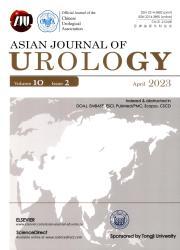预防草酸钙结石的药物疗法、补充疗法和替代疗法的系统回顾
IF 2.4
3区 医学
Q2 UROLOGY & NEPHROLOGY
引用次数: 0
摘要
目的对预防草酸钙结石的几种治疗方式进行了研究,但只有少数几种治疗方式被纳入美国泌尿外科协会指南。我们的研究旨在组织和询问可能有希望预防CaOx的现有研究。方法采用MEDLINE和Embase检索自成立至2022年11月16日的文献。我们的研究人群包括有或没有曹氏肾结石病史的成年人。在这些研究中,患者接受药物治疗、草药补充剂或未分类的研究化学物质治疗,这些化学物质未包括在当前美国泌尿学会预防CaOx结石的指南中。非原创研究被排除在外。结果6155篇鉴定文章中,38篇纳入最终分析。预防结石的五个不同类别的干预措施是“药物”、“草药补充剂”、“食物和宏量营养素”、“微量营养素”和“酶和益生菌”。减少已知泌尿危险因素的方法有托伐普坦、蔓越莓汁、柠檬酸镁、草酸降解酶ALLN-177和苹果酸。减少结石形成的预防药物是钠-葡萄糖共转运体-2抑制剂、二十碳五烯酸、乙烷-1-羟基-1,1-二膦酸盐。减少泌尿危险因素和结石形成的治疗方法是余甘子、米糠和氢氧化镁。结论几种已确定的治疗方法可能对CaOx结石的形成具有预防作用,并可能有助于纳入肾结石预防指南。本文章由计算机程序翻译,如有差异,请以英文原文为准。
Systematic review of pharmacological, complementary, and alternative therapies for the prevention of calcium oxalate stones
Objective
Several therapeutic modalities for the prevention of calcium oxalate (CaOx) stones have been studied, but only a select few of these modalities have been incorporated into the American Urological Association guidelines. Our study aimed to organize and interrogate existing research that may be promising for CaOx prevention.
Methods
A literature search was conducted using MEDLINE and Embase from inception to November 16, 2022. Our study population included adults with or without a history of CaOx kidney stones. Studies in which patients were treated with pharmacotherapies, herbal supplements, or uncategorized research chemicals that are not included in the current American Urological Association guidelines for preventing CaOx stones were included. Nonoriginal research was excluded.
Results
Out of the 6155 identified articles, 38 were included in the final analysis. The five distinct categories of interventions for stone prevention were “medications”, “herbal supplements”, “food and macronutrients”, “micronutrients”, and “enzymes and probiotics”. Modalities that were found to reduce known urinary risk factors were tolvaptan, cranberry juice, magnesium citrate, oxalate-degrading enzyme ALLN-177, and malic acid. Prophylaxis that reduced stone formation were sodium-glucose cotransporter-2 inhibitors, eicosapentaenoic acid, ethane-1-hydroxy-1,1-disphosphonate. Therapies that reduced urinary risk factors and stone formation were Phyllanthus niruri, rice bran, and magnesium hydroxide.
Conclusion
Several of the identified therapies may provide prophylactic benefits for CaOx stone formation and may be useful for inclusion in guidelines for kidney stone prevention.
求助全文
通过发布文献求助,成功后即可免费获取论文全文。
去求助
来源期刊

Asian Journal of Urology
UROLOGY & NEPHROLOGY-
CiteScore
4.00
自引率
3.80%
发文量
100
审稿时长
4 weeks
期刊介绍:
Asian Journal of Urology (AJUR), launched in October 2014, is an international peer-reviewed Open Access journal jointly founded by Shanghai Association for Science and Technology (SAST) and Second Military Medical University (SMMU). AJUR aims to build a communication platform for international researchers to effectively share scholarly achievements. It focuses on all specialties of urology both scientifically and clinically, with article types widely covering editorials, opinions, perspectives, reviews and mini-reviews, original articles, cases reports, rapid communications, and letters, etc. Fields of particular interest to the journal including, but not limited to: • Surgical oncology • Endourology • Calculi • Female urology • Erectile dysfunction • Infertility • Pediatric urology • Renal transplantation • Reconstructive surgery • Radiology • Pathology • Neurourology.
 求助内容:
求助内容: 应助结果提醒方式:
应助结果提醒方式:


